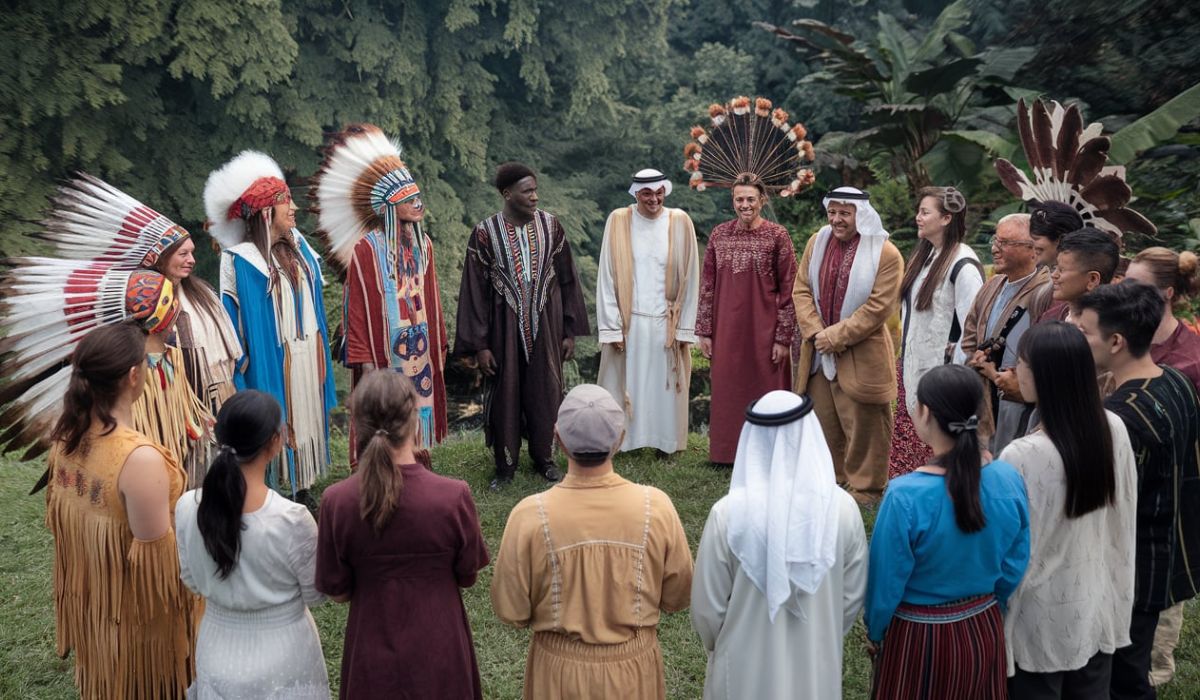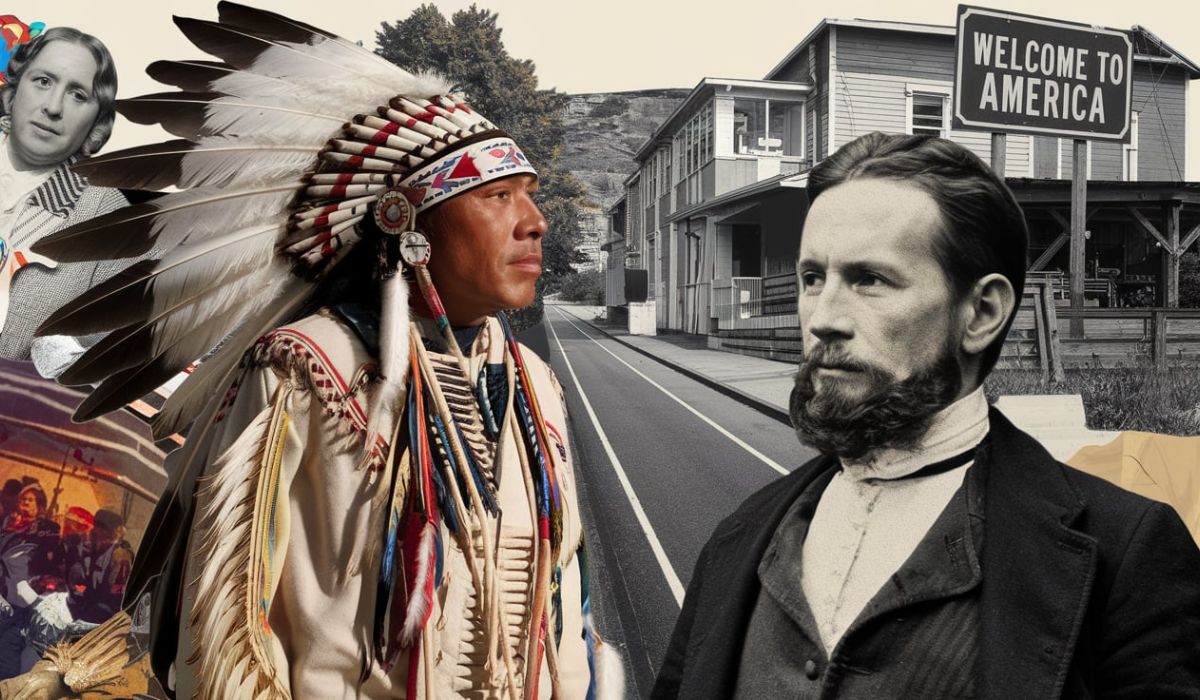Cultural diffusion is a fascinating concept that shapes the world around us in ways we often don’t realize. It explains how ideas, customs, technologies, and cultural practices spread from one society or group to another. Have you ever wondered how certain foods, music, or fashion styles become popular all over the world? That’s cultural diffusion at work!
In this article, we’ll dive into the question “What is cultural diffusion?” and explore how it affects everything from the way we communicate to the foods we eat and the music we listen to. Understanding cultural diffusion helps us appreciate how interconnected the world has become and how history has influenced our daily lives.
Introduction to Cultural Diffusion

Imagine for a moment that you’re enjoying a delicious slice of pizza in your hometown, even though you’re miles away from Italy. Or perhaps you’re listening to a pop song from South Korea while in the United States. This is cultural diffusion in action—an ongoing process through which cultural elements spread from one region or group to another.
So, what is cultural diffusion? Simply put, it’s the movement of cultural ideas, practices, and products across geographical and social boundaries. Over time, this diffusion leads to the blending or sharing of traditions, languages, art, technology, and more. It’s how the world has become a melting pot of influences, making our lives richer and more diverse.
The History of Cultural Diffusion
Cultural diffusion has been happening for thousands of years. From ancient trade routes like the Silk Road to modern-day internet connections, the movement of goods, ideas, and people has always been a part of human history.
Historically, cultural diffusion began with the movement of people—traders, explorers, and conquerors brought their ways of life to new regions. As civilizations interacted with each other, they shared their knowledge, traditions, and technologies. For example, the Egyptians spread their art and architectural knowledge through trade, while the Greeks shared their philosophical ideas with the Romans.
The spread of religions, such as Buddhism, Christianity, and Islam, is another example of cultural diffusion throughout history. These religions not only influenced spiritual practices but also shaped the cultures of regions they reached, changing languages, laws, and customs along the way.
What Are the Types of Cultural Diffusion?
Cultural diffusion can happen in several different ways. Let’s break down the main types:
-
Expansion Diffusion: This occurs when an idea or cultural trait spreads to new areas, but the original area still maintains the cultural trait. A great example is the spread of social media—people in different countries use it, but the culture behind it remains rooted in its place of origin.
-
Relocation Diffusion: This happens when people move from one location to another and bring their culture with them. For example, the migration of people from Italy to the U.S. in the 19th century brought pizza and pasta to the American culinary scene.
-
Hierarchical Diffusion: This form of diffusion occurs when an idea or cultural trait spreads from a higher-status group to a lower-status group. A prime example is the spread of fashion trends—from high-end designers to everyday consumers.
-
Stimulus Diffusion: Sometimes, cultural diffusion involves the spread of an idea that’s adapted or modified. For example, the fast-food industry took inspiration from American dining but adapted it to local tastes in countries like Japan, creating unique menu items.
Each type of diffusion plays a crucial role in how cultures influence one another, creating a rich exchange of ideas and practices.
How Does Cultural Diffusion Happen?

Cultural diffusion happens through several channels, and its pace and spread depend on several factors, including communication, technology, and transportation. Here are some common ways cultural diffusion takes place:
-
Trade and Commerce: As goods are exchanged, so are ideas. Traders and merchants often carry cultural practices from their homeland to the markets of foreign lands.
-
Migration and Immigration: When people move from one place to another, they bring their traditions, beliefs, and customs with them. These practices then influence their new communities.
-
Media and Entertainment: Movies, music, books, and television shows allow cultural elements to spread quickly. Think about the global success of Hollywood films or the popularity of K-pop music across the world.
-
Technology and the Internet: The internet has accelerated cultural diffusion by providing instant access to different cultures. Social media platforms, video-sharing sites, and news outlets all serve as vehicles for cultural exchange.
In essence, cultural diffusion is fueled by human movement, technological advances, and the sharing of knowledge, allowing cultures to blend and influence one another.
Examples of Cultural Diffusion in History
Throughout history, there are countless examples of cultural diffusion. Some of the most notable include:
-
The Silk Road: This ancient trade route connected China, the Middle East, and Europe, facilitating the exchange of goods, ideas, and cultural practices, from paper-making to the spread of Buddhism.
-
The Age of Exploration: As Europeans explored the Americas, Africa, and Asia, they brought their language, religion, and technology with them, while also absorbing new ideas and goods from these regions.
-
Colonialism: Although often controversial, colonial powers like Britain and Spain spread their language, legal systems, and culture to the regions they colonized, leaving lasting marks on the societies of Africa, Asia, and the Americas.
These historical examples highlight how cultural diffusion has shaped societies and influenced global development.
Modern-Day Cultural Diffusion
Cultural diffusion continues to shape the modern world in countless ways. With globalization, cultural exchange is more immediate and widespread than ever before. Here are some ways it’s happening today:
-
Food: Sushi from Japan, tacos from Mexico, and curry from India are now staples in many countries around the world. Through immigration and globalization, foods have crossed borders and become part of mainstream dining cultures.
-
Music: Artists from different countries often influence each other. For example, American pop music has influenced artists worldwide, while Latin and African music genres have become popular globally.
-
Fashion: Trends from one country can quickly spread to others through the media and fashion industry. What’s popular in Paris or New York today may soon be seen in cities around the globe.
Through globalization and modern communication tools, cultural diffusion is happening faster than ever, leading to a more interconnected world.
Cultural Diffusion and Globalization

Globalization is a powerful force that facilitates cultural diffusion. As people, products, and ideas move across borders more easily than ever before, cultures are blending and evolving at a rapid pace.
Globalization has made it easier for people to experience cultures beyond their own. With the rise of the internet, online shopping, and international travel, we’re constantly exposed to new ideas, products, and ways of life. Cultural diffusion now occurs on a scale that’s unprecedented in human history, and it continues to shape our everyday lives.
The Role of Media in Cultural Diffusion
Media plays a central role in cultural diffusion. Television shows, movies, social media, and music are all platforms through which culture spreads globally. A few ways media influences cultural diffusion include:
- Television and Movies: Shows and films from one country often become hits in others, influencing fashion, language, and social norms.
- Social Media: Platforms like Instagram, TikTok, and YouTube allow users from around the world to share their cultures, helping them spread quickly.
With the rise of media and technology, cultural diffusion is no longer confined to specific regions or trade routes—it’s happening in real time, on a global stage.
Cultural Diffusion in the Arts and Entertainment
Art, literature, and entertainment have always been key drivers of cultural diffusion. From the Renaissance in Europe to modern-day Hollywood movies, the arts have allowed ideas to cross borders and influence societies.
For example, African American culture, particularly jazz and hip-hop, has had a global influence, shaping music, fashion, and dance worldwide. Similarly, the spread of anime from Japan has gained a massive following in the West, influencing art, fashion, and even food.
Cultural Diffusion in Food
Food is one of the most common and enjoyable forms of cultural diffusion. What began as regional specialties have now become global phenomena:
- Pizza: Originally from Italy, pizza is now a global comfort food, with various countries adding their own twist to the dish.
- Sushi: This Japanese dish has become a favorite in many parts of the world, with sushi restaurants popping up everywhere from New York to Berlin.
Through travel, migration, and globalization, food has become an important symbol of cultural exchange.
Cultural Diffusion and Technology
Technology is another area where cultural diffusion is prominent. Innovations and tools developed in one country often spread globally. For example, the smartphone, originally developed in the U.S., has become ubiquitous across the globe, influencing communication, social interactions, and even business practices.
Similarly, the internet has allowed for the rapid diffusion of ideas and culture, breaking down geographical barriers and fostering a global exchange of knowledge.
The Positive and Negative Effects of Cultural Diffusion
Like anything, cultural diffusion has both positive and negative effects. On the positive side, cultural diffusion fosters understanding, promotes diversity, and can lead to technological and artistic innovations. It can bring new ideas to places that would otherwise be isolated.
On the negative side, cultural diffusion can sometimes lead to the loss of indigenous traditions, the erosion of local languages, or the spread of harmful stereotypes. It can also result in cultural homogenization, where distinct cultural identities are diluted.
How Cultural Diffusion Influences Identity
Cultural diffusion plays a role in shaping personal and group identity. As we are exposed to other cultures, we often integrate aspects of those cultures into our own lives. This can include adopting new fashion styles, trying new foods, or learning new languages.
However, the spread of culture can also create challenges as communities struggle to balance their traditions with outside influences. It’s essential to understand that cultural diffusion is a two-way process, where both cultures give and take.
Cultural Diffusion in the Digital Age
In the digital age, cultural diffusion is happening faster than ever before. Social media platforms, blogs, and online videos are powerful tools that allow ideas and culture to spread in an instant. Whether it’s the latest viral dance move or a new meme, digital platforms allow cultural practices to transcend geographical boundaries.
With the rise of digital media, cultural diffusion has reached new heights, connecting people from diverse cultures in ways that were once impossible.
Conclusion: Why Cultural Diffusion Matters
Cultural diffusion is not just a historical concept—it’s an ongoing process that shapes our world every day. From the food we eat to the music we enjoy, the ways in which we interact and understand one another are deeply influenced by the spread of culture. As the world becomes more interconnected, understanding what is cultural diffusion? is more important than ever.
FAQs
1. What is cultural diffusion?
Cultural diffusion is the spread of cultural beliefs, practices, and ideas from one group to another.
2. How does cultural diffusion happen?
It occurs through various channels like trade, migration, media, and technology, allowing cultural elements to spread across regions.
3. Can cultural diffusion lead to cultural loss?
Yes, in some cases, the spread of culture can result in the loss of indigenous traditions and languages.
4. What are some examples of cultural diffusion?
Pizza from Italy, jazz music from the U.S., and sushi from Japan are all examples of cultural diffusion.
5. How does the internet impact cultural diffusion?
The internet accelerates cultural diffusion by enabling the rapid sharing of ideas, traditions, and media across the globe.
for more visit: rankshort
